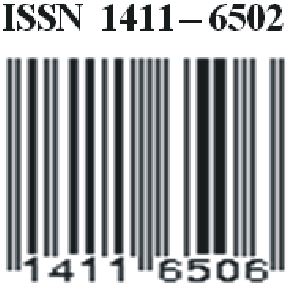Sintesa Poliol dari Minyak Sawit dengan Reaksi Epoksidasi dan Hidroksilasi
(1) Jurusan Teknik KimiaUniversitas Fajar Makassar
(*) Corresponding Author
DOI: https://doi.org/10.35580/chemica.v12i2.499
Abstract
Penelitian ini bertujuan mempelajari proses pembuatan poliol dari minyak sawit dan mempelajari pengaruh perbandingan mol oksidator (CH3COOH : H2O2), serta pengaruh konsentrasi katalis asam pada proses pembuatan poliol. Penelitian diawali dengan tahap epoksidasi, yaitu mereaksikan minyak dengan asam peroksida (campuran H2O2 danCH3COOH) menggunakan katalis H2SO4 pada suhu 60oC selama 4 jam. Selanjutnya, mereaksikan minyak terepoksidasi dengan campuran alkohol dengan katalis asam sulfat pada suhu 50oC.selama 2 jam. Kemudian menganalisis bilangan hidroksil produk. Hasil penelitian yang diperoleh bahwa pada rasio mol CH3COOH : H2O2 sama dengan 2 menghasilkan bilangan hidroksil terbesar yaitu 161,18 mg KOH/gram contoh. Variabel penambahan konsentrasi katalis 1% - 2% menunjukkan peningkatan signifikan, sedang konsentrasi 2%-4% tidak menunjukkan perubahan yang berarti. Produk yang diperoleh adalah larutan berwarna kuning berupa cairan agak kental. Bilangan hidroksil yang diperoleh pada poliol minyak sawit antara 68,49 sampai 171,11 mg KOH/gram contoh.
Kata kunci: Minyak sawit, Poliol, Epoksidasi, Hidroksilasi
ABSTRACT
This research aims to study the sinthesys process of polyols from palm oil and studying the effect of mole ratio of oxidant (CH3COOH: H2O2), and the influence of the concentration of acid catalyst. The first stage is epoxidation, the reaction of oil with an acid peroxide (H2O2 mixture and CH3COOH) using H2SO4 catalyst at a temperature of 60°C for 4 hours. Furthermore, the reaction of epoxidized oil with a mixture of alcohol with sulfuric acid catalyst at a temperature 50oC to 2 hours, then analyzed the number of hydroxyl products. The results obtained that the ratio of moles of CH3COOH: H2O2 is the same as the second largest producing hydroxyl number is 161.18 mg KOH/g sample. Addition of variable concentrations of the catalyst 1%-2% showed significant improvement, while the concentration of 2%-4% showed no significant change. The product obtained is a yellow colored solution in the form of slightly viscous liquid. Hydroxyl numbers obtained in the palm oil polyol between 68.49 to 171.11 mg KOH/g sample.
Keywords: palm oil, polyol, epoxidation, hydroxylationFull Text:
PDFArticle Metrics
Abstract view : 1278 times | PDF view : 565 timesRefbacks
- There are currently no refbacks.
ISSN: 2722-8649
Diterbitkan oleh Jurusan Kimia FMIPA Universitas Negeri Makassar (UNM) dua kali dalam setahun yaitu bulan Juni dan Desember.
Alamat Redaksi :Jurusan Kimia, Fakultas MIPA UNM, JL. Dg. Tata Parangtambung, Makassar 90224 Indonesia, Telp. 0411-840295; Fax: 0411840295;E-mail : [email protected]




